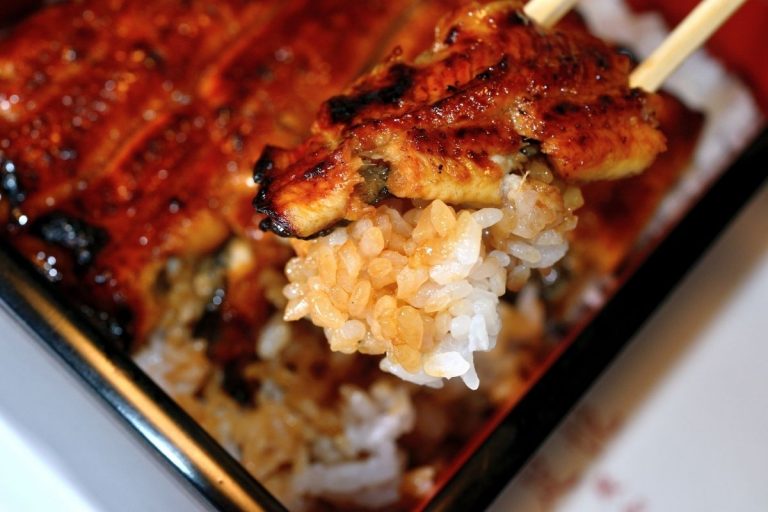Osechi ryōri or simply osechi is what most Japanese eat at the beginning of New Year. This type of dish is not something you find on a restaurant menu, but it is a type of dish that is prepared in the first days of January at home. Maybe he orsechi ryōri is the most important dish of the year, since each part of the dish symbolizes a wish for the following year. It is even eaten with special chopsticks that are round at both ends, one end is used by men and the other by the gods, according to tradition.
Osechi ryōri originally it was a way of preparing dishes to pass the first days of January, when the stores were closed. According to tradition, the first days of the year should not be cooked. Therefore, the saucers that make up the osechi can be prepared in advance and left in a cold area for days without spoiling. For this, many dishes are dry, or are sugary or bathed in vinegar. He osechi it is often kept in lacquered boxes called jubako that can be stacked.
Today the osechi it is bought, either in department stores or supermarkets. Prices are around 10,000 yen, and they are servings that can feed a small group of people for days. There are even dishes that can cost a hundred times more, which are prepared by famous chefs. Normally the most prestigious department stores start taking orders from the end of October.
Many of the ingredients that make up the orsechi ryōri represent prosperity, good luck and health. The basic ingredients are always the same, but there are differences in the recipes depending on the region.
When searching osechi keep in mind that presentation is very important. A good presentation shows a good balance in colors. It may be difficult in the first instance, but it is also important to note the efficiency with which each box is packed. The osechi more elaborate have vegetables with decorative designs that represent figures of the season such as pine nuts or plum blossoms. Some of the ingredients are:
Kuromame: Black beans garnished with sugar and soy sauce. They represent health.
Herring roe: Herring roe is naturally found in small heaps, thus representing a bountiful harvest and fertility.
Tazukuri: Dried anchovies. Tazukuri it literally means “to grow rice”, and represents an abundant harvest.
Gōbo: Burdock root seasoned with sesame or vinegar. The burdock root grows very deep, and it also symbolizes the heron (which in turn symbolizes a fruitful year), so it represents good health and abundance.
Datemaki: Omelet of fish paste or sweet shrimp. As the datemaki It looks like a wrapped papyrus, it symbolizes good education and culture.
Kouhaku kamaboko: Fish cake. It is said that the shape of the kouaku hamaboko it resembles the dawn of the New Year. The pink and white of this cake are a sign of good luck, since it is believed that pink is a talisman against evil and white symbolizes purity.
Kuri kinton: Sweet potato puree with chestnuts. Kinton means “golden mass” and represents gold and silver, so it is considered to bring fortune.
Yakizakana: Roasted Fish. Grilled fish is traditionally eaten as a way of asking for a successful career. They also have other meanings, depending on the fish. For example, the sea bream is a symbol of happiness, and eating eel is supposed to ensure faster promotion at work.
Ebi: Shrimp. Due to its long, beard-like antennae and curved shape, the shrimp represents longevity. It also represents renewal, since the shrimp sheds its skin.
Subasu: Vinegar lotus root. Cut into slices, the lotus root has several holes, thus symbolizing an unobstructed vision of the future.
Kouhaku namasu: Vinegar carrot and radish. This saucer represents the mizuhiki, a rope made from rice paper that is used on special occasions. He also wears the color red and white to repel evil and bring purity.
Konbu maki: Dried herring wrapped in seaweed. Konbu means “happiness.” Similar to datemaki, its rolled shape represents education and culture.
Saitomo: He saitomo it is a tuber of a plant called taro. Its multiple roots symbolize prayers for children.
Kuwai: Sagittaria root. The sagittaria plant begins to grow with a single root, which symbolizes determination. It also represents a successful career.
Surume: Squid. Represents celebration.
Nishiki tamago: Sifted and steamed boiled egg. The white and yellow colors of the egg make it a staple of the osechi.
Otafuku mame: Broad bean. Otafuku it is written with the kanji “much” and “fortune”, so it is supposed to attract good luck.
Hoshigaki: Dehydrated persimmon. Since the texture of the hoshigaki resembles the wrinkled skin of an old man, this represents longevity.
Daidai: Bitter orange. Daidai it also means “from generation to generation”, so a wish is made for children.


